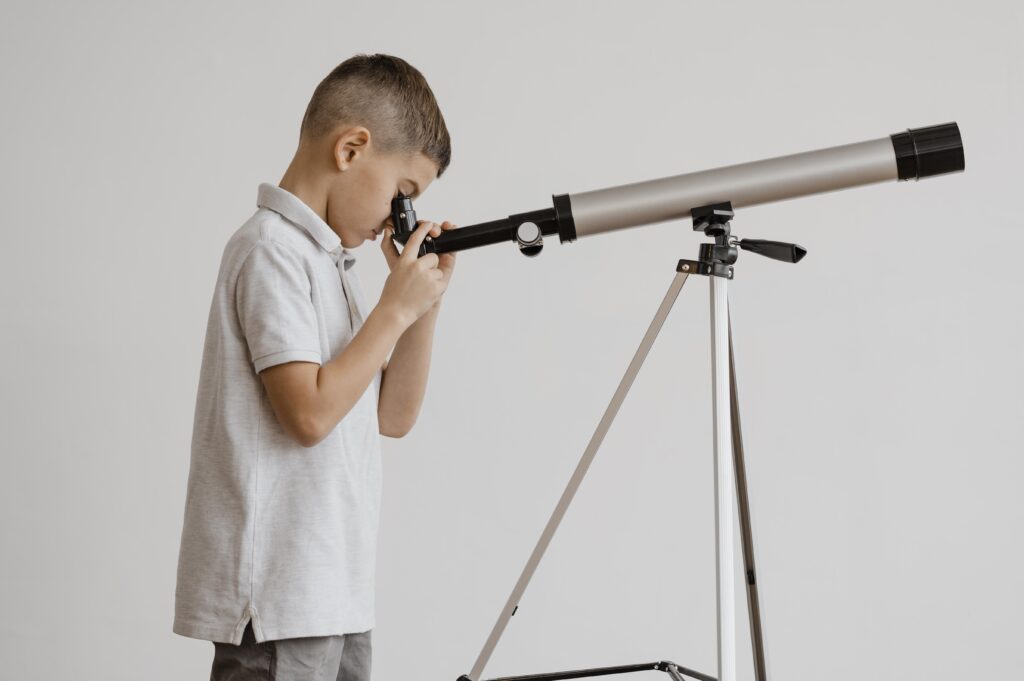The night sky have long captured the attention of human imagination, and having a telescope may turn this fascination into a hands-on exploration of the cosmic wonders. Choosing the best telescope involves understanding your needs, the different types of telescopes that are available, and important aspects to consider is, whether you’re a beginner astronomer or just a curious stargazer. We have tried to summarize few essential points for making it easier to choose a telescope. Here is an in-depth buying guide to assist you in making an educated choice.

1. Determine Your Goals: Before getting into the technical details, consider why you want a telescope. Is it because; you are interested in observing planets, deep-sky objects like galaxies and nebulae, or both? Are you planning on traveling with your telescope? Your goals will influence the type of telescope that suits you best. If you want to travel with your telescope go for compact models. And if you are installing it at one place, you may choose larger telescopes.
2. Telescope Types: There are three primary types of telescopes: refractors, reflectors, and compound (or catadioptric) telescopes.
- Refractors: These telescopes use lenses to bend light and focus it. They’re known for crisp images and low maintenance. However, they can be heavier and more expensive for larger apertures.
- Reflectors: Reflecting telescopes use mirrors to gather and focus light. They offer great value for larger apertures, making them popular among enthusiasts. Keep in mind that they might require more collimation (alignment) maintenance.
- Compound Telescopes: These combine lenses and mirrors, offering a balance between portability and performance. Popular designs include Schmidt-Cassegrains and Maksutov-Cassegrains.
3. Aperture Size : Aperture, the diameter of the telescope’s primary optical element, determines how much light the telescope can gather. A larger aperture reveals more detail and fainter objects. Go for the largest aperture that suits your budget and transportation constraints.
4. Mounts and Stands: Telescopes come with various mounts—equatorial and altazimuth. Equatorial mounts are ideal for tracking celestial objects as the Earth rotates, while altazimuth mounts are simpler and more intuitive. A stable mount is crucial to prevent shaky views.
5. Eyepieces and Magnification: There are several magnification levels available with various eyepieces. Although a telescope typically comes with a few eyepieces, you can spend additionally to improve your viewing results. The best magnification depends on the object you’re watching and the weather, so keep in mind that higher magnification doesn’t always equal better views.
6. Budget and Accessories: Set a budget that includes the telescope, any additional eyepieces, filters, and other accessories you might need. Also, consider accessories like finderscopes (for locating objects) and star charts or astronomy apps to help you navigate the sky.
7. Research and Reviews: Before finalizing your purchase, read reviews, watch videos, and consult experienced astronomers for recommendations. Online astronomy forums can be a valuable source of firsthand information.
8. Brands and Warranty: Reputable brands often offer better quality and customer support. Check the warranty terms to ensure you’re covered in case of defects or issues.
9. Size and Portability: Consider the size and weight of the telescope, especially if you plan to take it on trips. A portable telescope that’s easy to set up can lead to more frequent and enjoyable observations.
10. Patience and Learning: Remember that learning to use a telescope effectively takes time. Learning to align the mount, locate objects, and focus properly can be a gradual process. Be patient and enjoy the learning curve.
A world of exploration and amazement is made possible by owning a telescope. You will be well equipped to select a perfect telescope that fulfills both your astronomical aspirations and your practical demands if you have a clear grasp of your goals, have done your study, and have given crucial characteristics and some thought. The correct telescope may bring the cosmos closer to your eyes and inspire a lifelong passion for stargazing, whether you’re looking at the Moon’s craters or Saturn’s rings.
